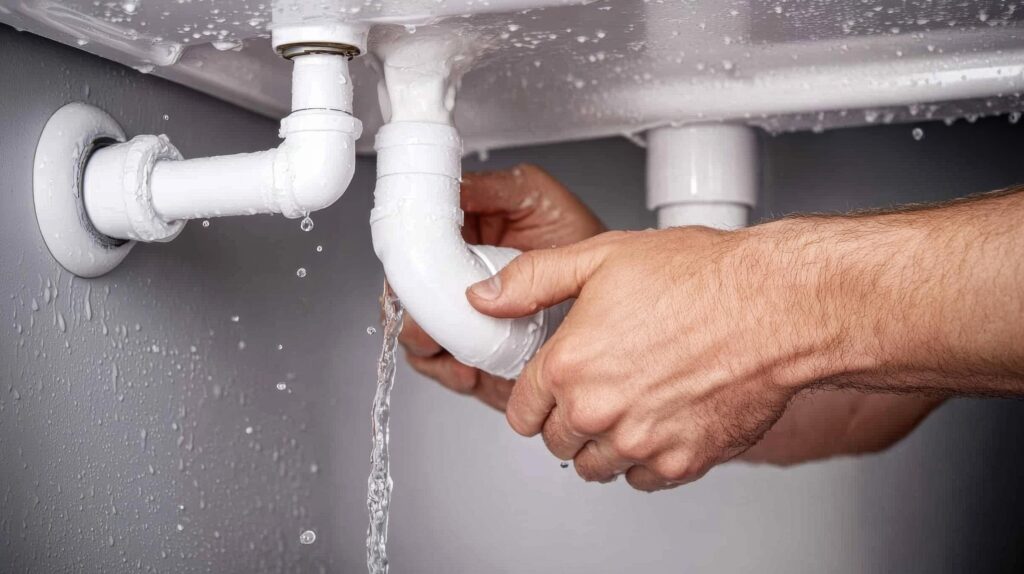
What Strategies Boost Lead Generation for Restoration?
Much like a well-tuned orchestra, your lead generation strategy for restoration services needs harmony between various elements. You can’t afford to overlook the power of targeted Google Ads and local SEO techniques. By refining your approach and focusing on lead generation for restoration companies that truly resonate with your audience, you can elevate your visibility and engagement. But what specific tactics will ensure you hit the right notes and drive conversions?
Key Takeaways
- Utilize Google Ads to target specific keywords, enhancing visibility to potential clients searching for restoration services.
- Craft compelling ad copy that emphasizes urgency and includes strong calls-to-action to prompt immediate responses.
- Implement local SEO and geographic targeting strategies to attract nearby customers with relevant service offerings.
- Allocate budget effectively across brand awareness, lead generation for restoration, and retargeting to maximize overall return on investment.
- Monitor and optimize campaigns regularly by analyzing performance data and conducting A/B testing to refine messaging and targeting.
Understanding the Importance of Google Ads in Lead Generation for Restoration Services
How can Google Ads transform your restoration marketing efforts? By leveraging Google Ads, you can elevate your visibility, reach potential clients actively searching for restoration services, and get more water damage restoration leads.
Unlike traditional marketing methods, Google Ads allows you to target specific keywords relevant to your business, ensuring your ads appear right when users need your services most. This immediacy can greatly enhance your lead generation for restoration, turning interest into action.
Moreover, Google Ads provides valuable analytics to refine your strategy continuously. You’ll gain insights into which keywords and ad placements yield the best results, enabling you to allocate your budget more effectively.
Flexibility is another advantage; you can adjust your campaigns in real-time based on performance data.
In the competitive field of restoration marketing, utilizing Google Ads boosts your visibility and positions your business as a trusted solution, ultimately driving more leads and conversions.
Identifying Your Target Audience for Effective Campaigns
To create effective campaigns, you need to clearly define your target audience’s demographic characteristics and analyze their behavior patterns.
By understanding who they are and what drives their decisions, you can tailor your messaging to resonate deeply.
Utilizing market research tools will help you gather critical insights, ensuring your strategies hit the mark.
Define Demographic Characteristics
Understanding the demographic characteristics of your target audience is essential for crafting effective lead generation for restoration campaigns in the restoration industry. By engaging in demographic profiling, you can identify key attributes such as age, income level, location, and family status.
This information allows for precise audience segmentation, ensuring your messaging resonates with specific groups. For example, a campaign targeting homeowners aged 30-50 in suburban areas will differ greatly from one aimed at commercial property managers.
Tailoring your campaigns based on these characteristics enhances relevance and increases conversion rates. As a result, invest time in researching and analyzing your audience demographics.
It’s a strategic step that can greatly boost your lead generation for restoration efforts and drive successful restoration projects.
Analyze Behavior Patterns
After defining demographic characteristics, the next step is to analyze behavior patterns that influence your target audience’s decisions. Understanding these patterns provides valuable behavioral insights, allowing you to tailor your campaigns effectively. By mapping out customer journeys, you can identify key touchpoints where engagement is most likely to occur.
| Behavior Pattern | Insights Gained | Campaign Focus |
|---|---|---|
| Online Research | Preference for details | Informative content |
| Social Media Usage | Influenced by peers | Engaging social content |
| Email Engagement | High response rate | Targeted offers |
| Service Feedback | Desire for reliability | Trust-building strategies |
Utilize Market Research Tools
While you may have a clear idea of your target audience, leveraging market research tools can refine your insights and enhance your lead generation for restoration efforts. By conducting thorough market analysis, you can identify demographics, preferences, and pain points that resonate with potential clients. These insights enable you to tailor your marketing campaigns effectively, ensuring your messaging hits home.
Additionally, competitor insights reveal what strategies are working for others in your industry. By analyzing their strengths and weaknesses, you can differentiate your services and position your brand more strategically.
Combining these research tools sharpens your focus on the right audience and boosts your chances of converting leads into loyal customers. Invest in market research to maximize your outreach potential.
Crafting Compelling Ad Copy for Water Damage Services
When crafting ad copy for your water damage services, it’s essential to highlight the urgency of the situation—every minute counts when dealing with water issues.
You need to make it clear how your services can greatly impact customers’ lives, restoring their peace of mind.
Don’t forget to include a strong call-to-action that motivates potential clients to reach out immediately for help.
Highlight Urgency and Impact
To effectively capture attention in your ad copy for water damage services, you must convey a sense of urgency and the potential impact of inaction. Use urgent messaging combined with impactful visuals to create a compelling narrative that resonates with your audience.
Here’s a strategic breakdown to evoke emotion:
| Urgency Level | Consequence of Delay | Emotional Impact |
|---|---|---|
| Immediate | Structural Damage | Fear |
| Within 24 Hours | Mold Growth | Anxiety |
| Within 48 Hours | Health Risks | Concern |
| Within 1 Week | Increased Costs | Frustration |
| Beyond 1 Week | Irreparable Damage | Despair |
Use Clear Call-to-Action
How can you ensure your audience takes immediate action when faced with water damage? The answer lies in clear call-to-action placement within your ad copy.
When crafting compelling messaging, you need to prompt potential clients with direct instructions. Phrases like “Call now for a free assessment!” or “Get your home restored today!” create urgency and encourage immediate responses.
Effective messaging doesn’t just inform; it compels action. Highlight the consequences of inaction and the benefits of your services, making certain your call-to-action stands out visually.
Position it prominently in your ads, making it easy for customers to engage. By strategically integrating these elements, you’ll boost lead generation for restoration and ensure your audience is motivated to act swiftly when disaster strikes.
Utilizing Local SEO to Enhance Google Ads Performance
Why settle for just visibility when you can enhance your Google Ads performance through local SEO? By integrating local citation and keyword optimization strategies, you can considerably improve your ad relevance and reach.
Start by ensuring your business information is consistent across all online platforms. This consistency boosts your credibility and helps Google recognize your business as a local authority.
Next, focus on keyword optimization tailored to your local audience. Identify the search terms your potential customers are using and incorporate them into your ad copy and landing pages. This targeted approach improves click-through rates and increases the chances of conversion.
Lastly, consider leveraging Google My Business to enhance your local presence. The more accurate and complete your profile, the better your chances of ranking higher in local searches.
Implementing Geographic Targeting for Maximum Impact
While many businesses overlook the power of geographic targeting, it can greatly elevate your lead generation for restoration efforts in the restoration industry.
By implementing geographic segmentation, you can zero in on specific areas where your services are in high demand. Understanding local demographics allows you to tailor your messaging and offerings, ensuring they resonate with potential clients.
Consider these strategies for effective geographic targeting:
- Identify high-risk areas prone to restoration needs
- Analyze local demographics to better understand customer behavior
- Use geo-specific keywords in your content and ads
- Leverage location-based social media advertising
- Monitor performance metrics for targeted campaigns
Setting a Budget and Bidding Strategy for Your Ads
As you explore lead generation for your restoration business, setting a clear budget and an effective bidding strategy for your ads is essential to maximizing your return on investment. Proper budget allocation helps you determine how much to spend on each campaign while ensuring you remain competitive in your market.
Utilizing various bidding techniques can further enhance your ad performance. Here’s a simple breakdown:
| Budget Allocation | Bidding Technique | Expected Outcome |
|---|---|---|
| 30% Brand Awareness | CPC (Cost Per Click) | Increased traffic |
| 50% Lead Generation for Restoration | CPA (Cost Per Acquisition) | Higher lead quality |
| 20% Retargeting | CPM (Cost Per Mille) | Enhanced brand recall |
Leveraging Ad Extensions to Improve Click-Through Rates
To boost your click-through rates (CTR) effectively, leveraging ad extensions is a strategic move that can set your restoration business apart from competitors.
Ad extensions provide additional information and visibility, enhancing your ads’ appeal and encouraging potential clients to engage.
Consider implementing these ad extensions to elevate your CTR:
- Sitelink Extensions: Direct users to specific pages on your site.
- Call Extensions: Enable one-tap calling for immediate contact.
- Location Extensions: Highlight your physical location to attract local clients.
- Callout Extensions: Showcase unique selling points or promotions.
- Structured Snippet Extensions: Present specific service categories or features.
Analyzing and Optimizing Your Campaign Performance
How can you affirm that your restoration campaigns are truly effective? Start with a thorough campaign analysis. Immerse yourself in your performance metrics to identify which strategies yield the best results. Are your click-through rates high enough? Are leads converting into clients? By scrutinizing these figures, you can pinpoint areas needing improvement.
Next, consider A/B testing different ad variations. This proactive approach allows you to see what resonates with your audience. Don’t just accept mediocre performance; optimize continuously. Adjust your targeting, refine your messaging, and enhance your visuals based on what your analysis reveals.
Regularly reviewing and optimizing your campaigns ensures you stay ahead of competitors and maximize ROI. Remember, the goal is to generate leads and convert them into loyal customers.
Integrating Google Ads With Other Marketing Strategies
To maximize your lead generation for restoration, you need to integrate Google Ads with your other marketing strategies effectively.
By creating cross-channel campaign synergy, you can ensure consistent messaging that resonates with your targeted audience.
This strategic approach enhances visibility and drives higher engagement across multiple platforms.
Cross-Channel Campaign Synergy
While many businesses rely solely on Google Ads for lead generation, integrating this powerful tool with other marketing strategies can amplify your results considerably.
By leveraging cross-channel synergy, you can create a cohesive and effective campaign integration that resonates with your audience. Here are some strategies to take into account:
- Use social media ads to retarget Google Ads visitors.
- Incorporate email marketing to nurture leads generated from Google Ads.
- Utilize content marketing to provide valuable resources linked to your Google Ads.
- Implement SEO strategies to improve organic search visibility for your Google Ads.
- Analyze performance data across channels to optimize your overall marketing efforts.
Targeted Audience Segmentation
Building on the idea of cross-channel campaign synergy, targeted audience segmentation plays a pivotal role in maximizing the effectiveness of your lead generation for restoration efforts.
By employing audience profiling and segmentation strategies, you can tailor your messaging to address the unique needs of each group. This means identifying specific demographics, interests, and behaviors that align with your restoration services.
When you integrate Google Ads with other marketing strategies, such as email campaigns or social media outreach, you’ll enhance your ability to reach potential clients more effectively.
This strategic approach boosts engagement and improves conversion rates, as your audience feels more connected to your targeted offers.
Ultimately, refining your segmentation efforts will lead to more qualified leads and higher ROI.
Staying Updated With Trends in Digital Advertising for Restoration Companies
As the digital landscape evolves, staying updated with trends in digital advertising is essential for restoration services aiming to attract new clients and enhance their market presence.
Embracing the latest restoration marketing updates can set you apart from competitors and optimize your lead generation for restoration strategies. Here are some key trends to evaluate:
Video Marketing: Engage potential clients with informative and emotional storytelling.
SEO Optimization: Adapt your content to match popular search queries specific to restoration services.
Social Media Advertising: Leverage platforms like Facebook and Instagram to reach broader audiences.
Personalization: Tailor your marketing messages to resonate with individual client needs.
Data Analytics: Use insights from campaigns to refine your strategies and improve ROI.
Recap
In the competitive landscape of restoration services, leveraging Google Ads and local SEO is essential for lead generation for restoration. By crafting targeted campaigns, compelling ad copy, and utilizing geographic strategies, you can effectively reach your local audience. Have you considered how optimizing your ad performance could transform your business? Continuously analyzing your efforts ensures you stay ahead of trends and maximize your return on investment. Embrace these strategies, and watch your lead generation soar.


